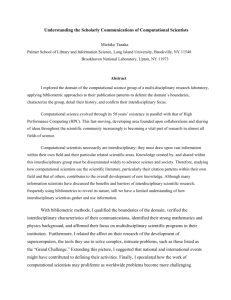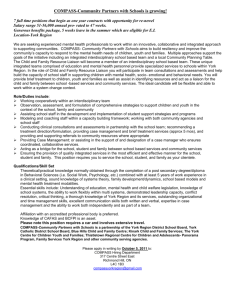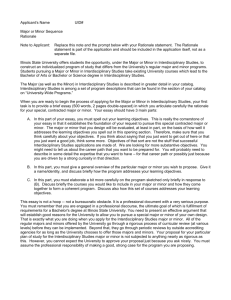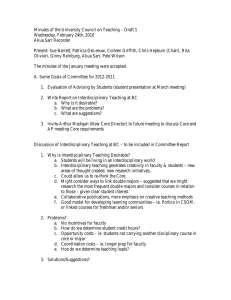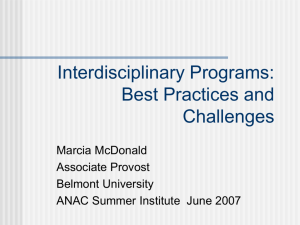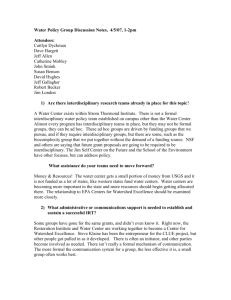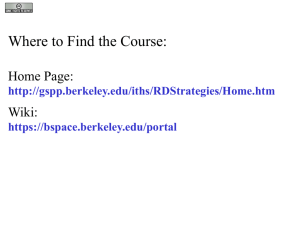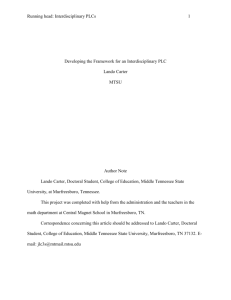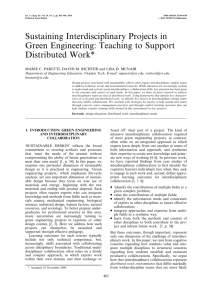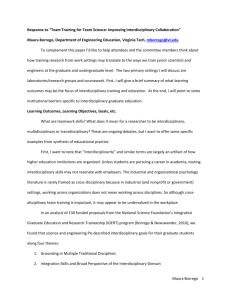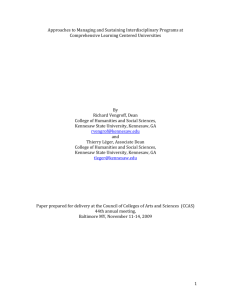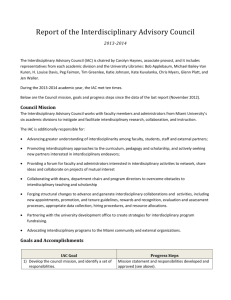What are ways to collaborate: - Department of Computer Science
advertisement
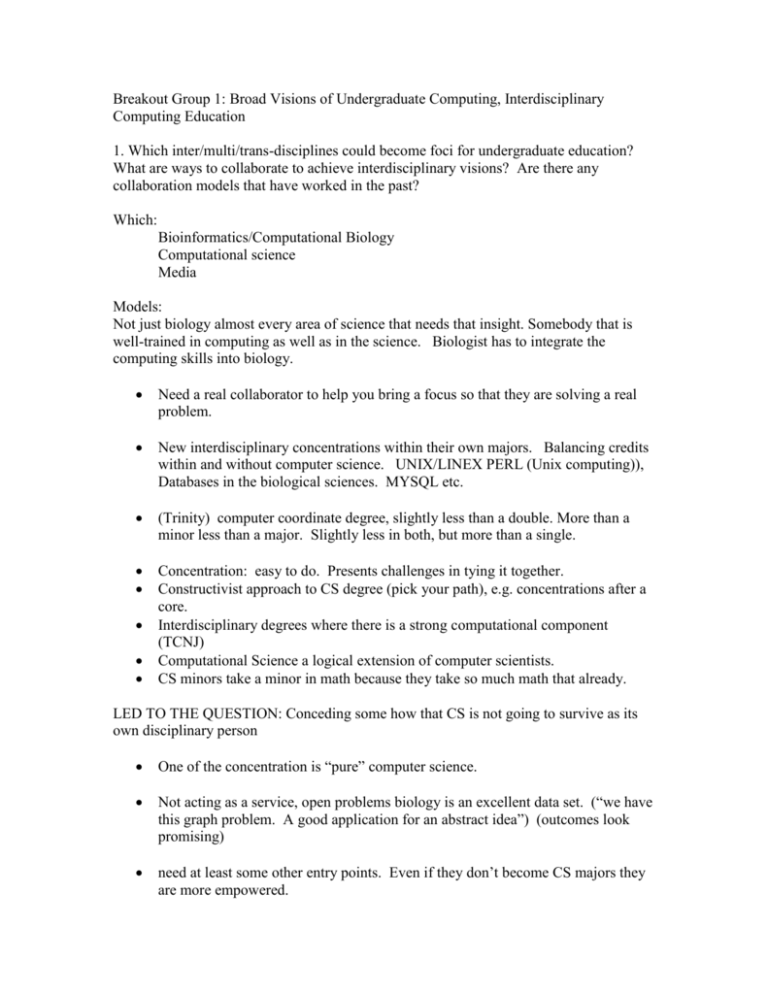
Breakout Group 1: Broad Visions of Undergraduate Computing, Interdisciplinary Computing Education 1. Which inter/multi/trans-disciplines could become foci for undergraduate education? What are ways to collaborate to achieve interdisciplinary visions? Are there any collaboration models that have worked in the past? Which: Bioinformatics/Computational Biology Computational science Media Models: Not just biology almost every area of science that needs that insight. Somebody that is well-trained in computing as well as in the science. Biologist has to integrate the computing skills into biology. Need a real collaborator to help you bring a focus so that they are solving a real problem. New interdisciplinary concentrations within their own majors. Balancing credits within and without computer science. UNIX/LINEX PERL (Unix computing)), Databases in the biological sciences. MYSQL etc. (Trinity) computer coordinate degree, slightly less than a double. More than a minor less than a major. Slightly less in both, but more than a single. Concentration: easy to do. Presents challenges in tying it together. Constructivist approach to CS degree (pick your path), e.g. concentrations after a core. Interdisciplinary degrees where there is a strong computational component (TCNJ) Computational Science a logical extension of computer scientists. CS minors take a minor in math because they take so much math that already. LED TO THE QUESTION: Conceding some how that CS is not going to survive as its own disciplinary person One of the concentration is “pure” computer science. Not acting as a service, open problems biology is an excellent data set. (“we have this graph problem. A good application for an abstract idea”) (outcomes look promising) need at least some other entry points. Even if they don’t become CS majors they are more empowered. Problem of lock out to critical courses. 2. Which inter/multi/trans disciplinary communities now have strong leadership and focus? Which need aggressive action to achieve national transformation? bio-informatics, media, computational economics (game theory), oceanography, GIS systems Geography or Meteorology & CS 3. If stakeholders are to thrive in interdisciplinary groups or programs, what administrative and organizational changes are needed within or outside the academy? Need real serious support from administration to break down silos Tenure/promotions , multi-disciplinary activity takes a lot of time to do, expectation of scholarship (where are your papers? Both in terms of have you written any and where are you publishing) External review of scholarship: who reviews your scholarship? Not just CS. Big space commitment. Give students a place where they can work together to do collaboration. At the department level how do they collaborate and share sharing turf. Community college: how do you deal with a set general education core and make the transfer seemless? College level sharing between schools: how do deans share? Declining enrollments has created a credibility problem for CS departments. We don’t have the institutional support we should have. 4. How can the design and delivery of interdisciplinary computing education courses and programs become a shared responsibility? Notion of “service” vs. “collaboration”. From a management standpoint you can view it as symbiotic service (some one has to take responsibility for courses and students load), but can’t simply degenerate into CS courses that are in service of other programs. Need to distinguish between collaboration, sharing, and service. Need to change the culture of how disciplines integrate curricula. Discussion: Spend the time getting together with scholars outside the disciplines. o What are they? What should those courses be? Don’t like the term service what we are doing for the non-majors is somehow less. Computing is the calculus of the 20th century. Offering computing in a more holistic way that meets needs both of those in the major and those others who need it. Funding things for non-majors, great way to get students into the major. Communications majors want to understand this stuff . We have the same problem and fixed it: entry into the major via alternatives Multiple paths to entry into the major. How to set the path in the class when you have a mixed group. 5. What types of activities can or should CPATH fund to facilitate interdisciplinary pathways and organizational change to promote them? Fund the kinds of collaborations we are already doing so that we can create good model that others can adopt and adapt.. (see question 1) The kinds of things we’ve done at our institutions. Get administrators to hear this message. Support multidisciplinary collaborations of many kinds.




